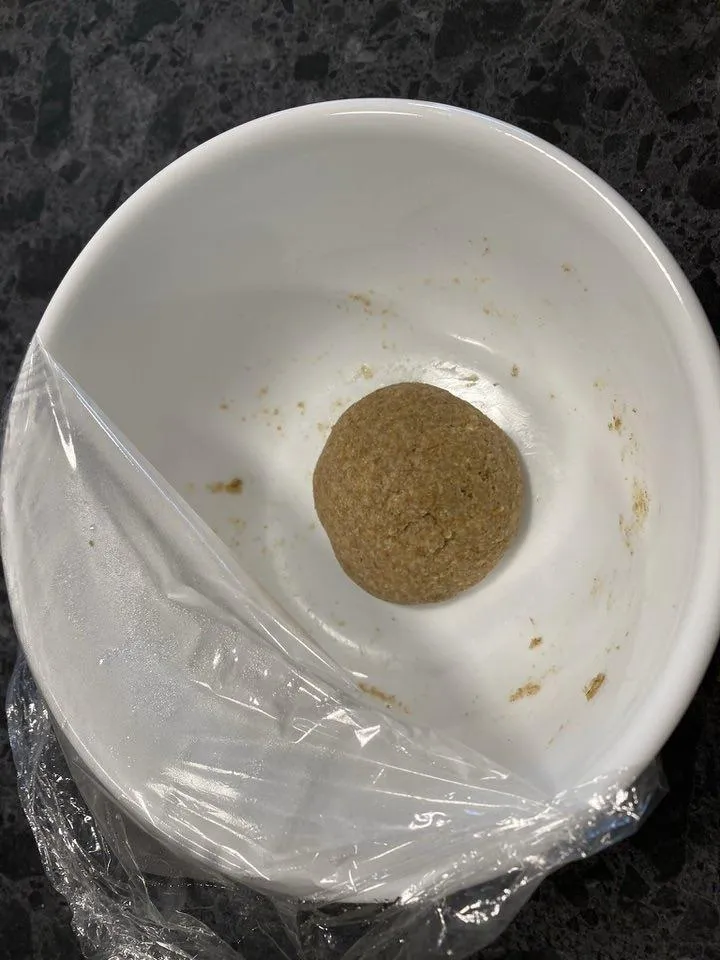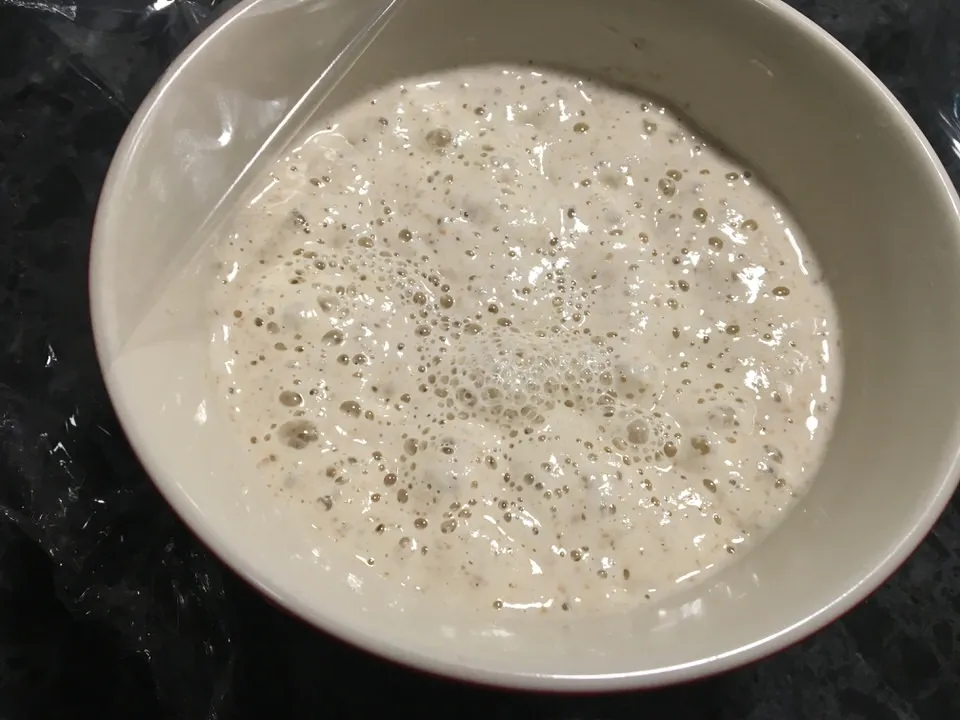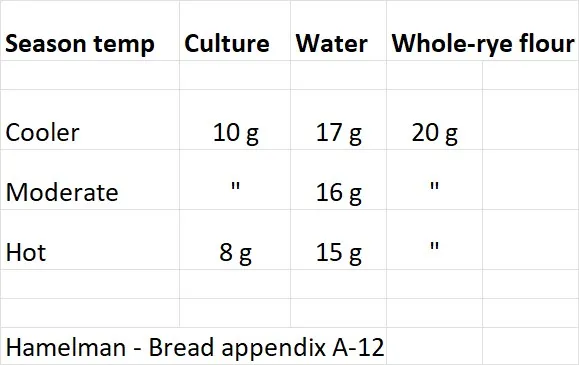
This is my stiff rye culture, also known as a Sourdough, Mother, Starter, Levain etc. This is the only culture I maintain. I feed it once a day first thing in the morning and it lives on my kitchen countertop. I follow Jeffrey Hamelman’s feeding regimen for which I have made a quick reference chart below. The composition of the feed varies slightly according to the season. When I intend to bake the next day, I convert the discard from the mornings feed to the required levain for the bake over two feeds. You can see the resultant white liquid levain, fully ripe and ready to mix into the dough.
This method ensures a very lively levain with minimal waste. I hope this provokes some thought and discussion.


That is similar to how I maintained mine, but it had 70% hydration instead. I would dissolve a portion of it completely in warm water (like very light milk) to hydrate a biga to make a dough. I believe this stiff dough method would work great if the starter had matured and strong as I am not sure if this would work okay with a new and weak starter. I no longer maintain a SD starter as instant yeast and yeast water work much better for me for now.
I hope you continue to make good bread with whatever leaven you use. Baking is therapeutic I think.
Cheers,
Gavin
Thank you for sharing this Gavin, I’m sure it will be helpful to many here. I have long kept my rye starter at 100% hydration. Based on your posts I have recently converted it to approximately 75-80% hydration. I’m still too lazy to feed daily, but now that I’ve been baking a bit more often, I’d say it is getting feed a couple of times per week the rest of the time it continues to live in the fridge. I comes out to make a levain in a single build unless I don’t have enough starter and thus need to do a two stage levain build.
I have the time Benny as I'm retired and also need something to get me up and about in the mornings.
There's lots of methods as long as they produce good bread. Your bread can attest to that.
Cheers,
Gavin
This is why I love baking bread. You can take simple ingredients and just by varying the methods come up with countless different results. My starter is over 20 years old and is a basic white with a little rye or WW bran thrown in kept at 66% hydration. It has always lived in the fridge and I take what I need to build a fresh young levain in one or 2 builds. I convert it to a rye or other starter as needed and refresh the mother starter when I’m down to a little bit and it’s getting too loose.
Correct. There's many methods as long as you can produce good bread. Happy baking, Cheers,
Gavin.
“Should be refreshed daily and used to make bread everyday (this is more proof we live in a less than ideal world).” From Hamelman’s Bread.
Glad to know that you are living in a nearly perfect world Gavin
I have seriously considered doing this but I am not sure I could get away with a just once a day feeding regimen. What does your starter look like right before you feed it? I had a rye starter like yours but it was fed only weekly. It worked well for me but I went back to a 90%white 10% rye because I found it easier to read it’s vital signs. I love the look of your white levain which I assume is the 120% version that Hamelman’s recipe include. I am a firm believer that better bread is made with a well maintained starter and never let my starter fall from its peak before feeding again even as it lives in the fridge.
I have however been forced to rethink what I thought I knew about the whole SD bread making process after using the non leavin method detailed in my recent blogs.
Maybe it’s the camera/lighting but your rye looks more brown than mine which has a more grayish green color and even though it was fed the same ratio as yours it could never be formed into a ball like a stiff starter.
Thanks for sharing your experience and giving me more to think about.
Don
My starter looks much the same before I feed it. If it’s been hot here and I haven’t reduced the hydration as recommended, it gets a whiteish outer coat. Otherwise, the big difference is the touch; I break some off and it feels like fudge, also the smell is like a ripe sourdough.
Yes, my levain is 125% hydration and very easy to handle. It’s very active never misses making good bread.
The brown colour of the rye culture is probably due the home milled whole rye. I mill enough for a week and keep the flour in a sealed jar at room temperature.
Thanks for joining this discussion.
Cheer,
Gavin
I have done basically what Ian does but I don't bother keeping track of the hydration. I just go by how it feels. I also have no regular schedule. If it gets used I make more.
The last couple bakes have been using MT's no levain and I have to say I am unlikely to change to anything else in the near future. It is so easy and so darn successful and most importantly it tastes so good !! The last loaf was thawed and cut today for lunch . The crust and crumb and flavor are as good as they were when I baked it 2 weeks ago. I left these two loaves in the fridge to retard for an extra 8 hrs. They were even better than the others made previously. I make the dough during the day and leave it till it is 50% and then shape and retard over night. I wanted to be able to watch the process so it doesn't work for me to make it in the evening and leave it over night on its own. My YW addition probably has something to do with that as it is very active.
Just goes to show there are many ways to get great bread. c
Thanks for entering the discussion. Very interesting. Yes, many methods to make good bread. Gavin.